The gardens of Melbourne Hall: A spectacular outdoor space 500 years in the making
The gardens at Melbourne Hall in Derbyshire have been in the same family for 500 years. Non Morris meets Lord and Lady Ralph Kerr to find out about this rare example of an 18th-century Anglo-French Baroque garden, which has not only been sensitively restored but added to with wonderful new plantings in its wilder parts. Photography by Andrea Jones.

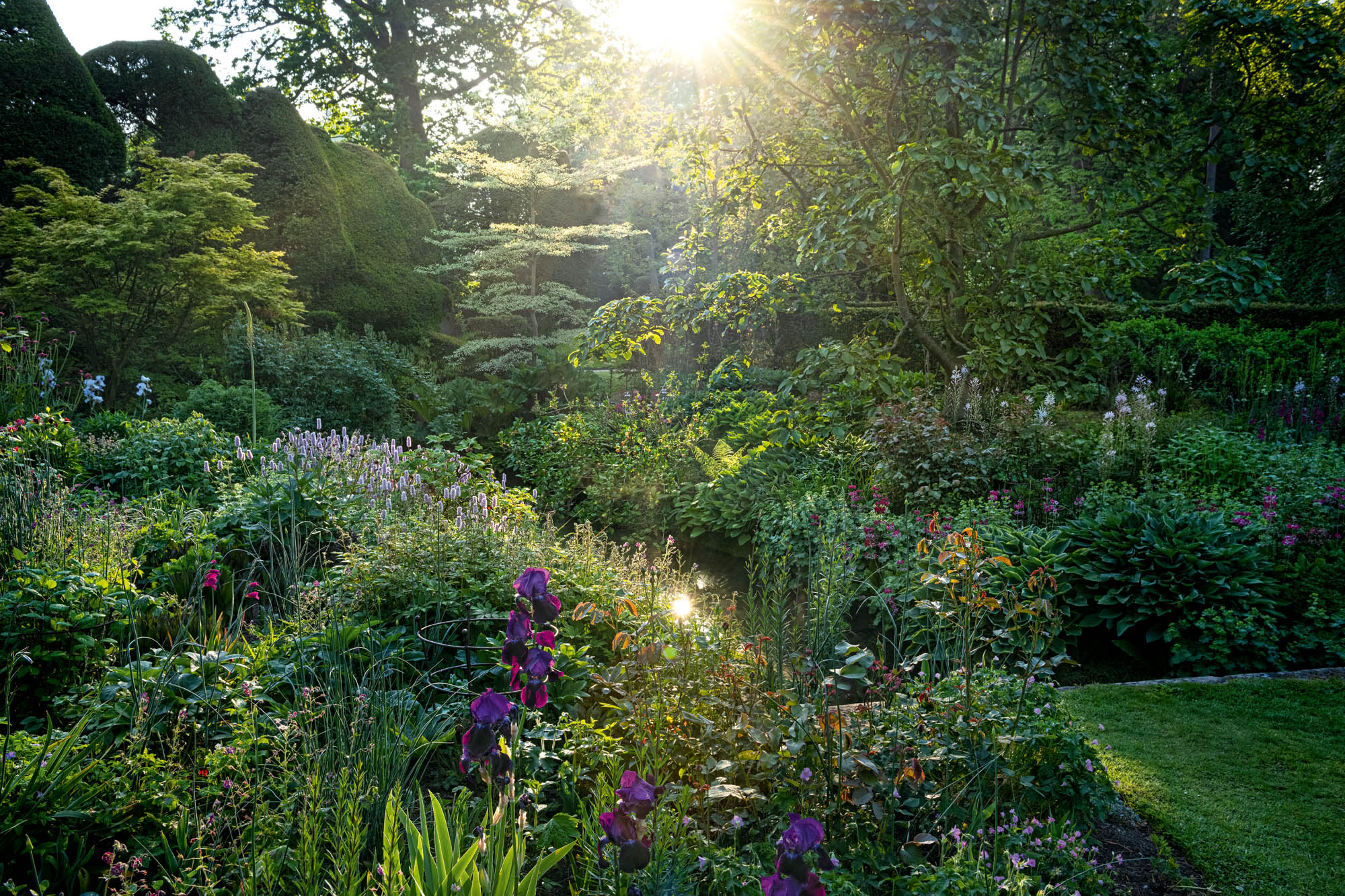
You could, perhaps, be in France. An elegant grey-pink façade and a fleet of white-painted garden furniture look down over gracious sloping lawns studded with perfectly spaced topiary and early-18th-century urns. The lawns lead down steadily beyond the fine Jan van Nost Mercury and arrive at the Great Basin, a generous spreading pool with its shimmering reflections of cloud-pruned yew and a celebrated wrought-iron arbour, The Birdcage.
The gardens at Melbourne Hall, with their tree-lined allées, carefully framed vistas and cleverly positioned ponds and fountains, are regarded as the best surviving example of the early-18th-century Anglo-French Baroque style, a rare chance to see a surviving garden of this period, when designs were directly influenced by formal French gardens, such as Versailles.
Melbourne is uplifting, too, because, as well as restoring and respecting the historical importance of the gardens, which have been in the family for 500 years, Ralph and Marie-Claire Kerr have added their own deeply personal signature with extensive planting of exquisite specimen trees and a wonderful painterly approach to the gentler, wilder parts of the garden away from the grandeur of this main axis.
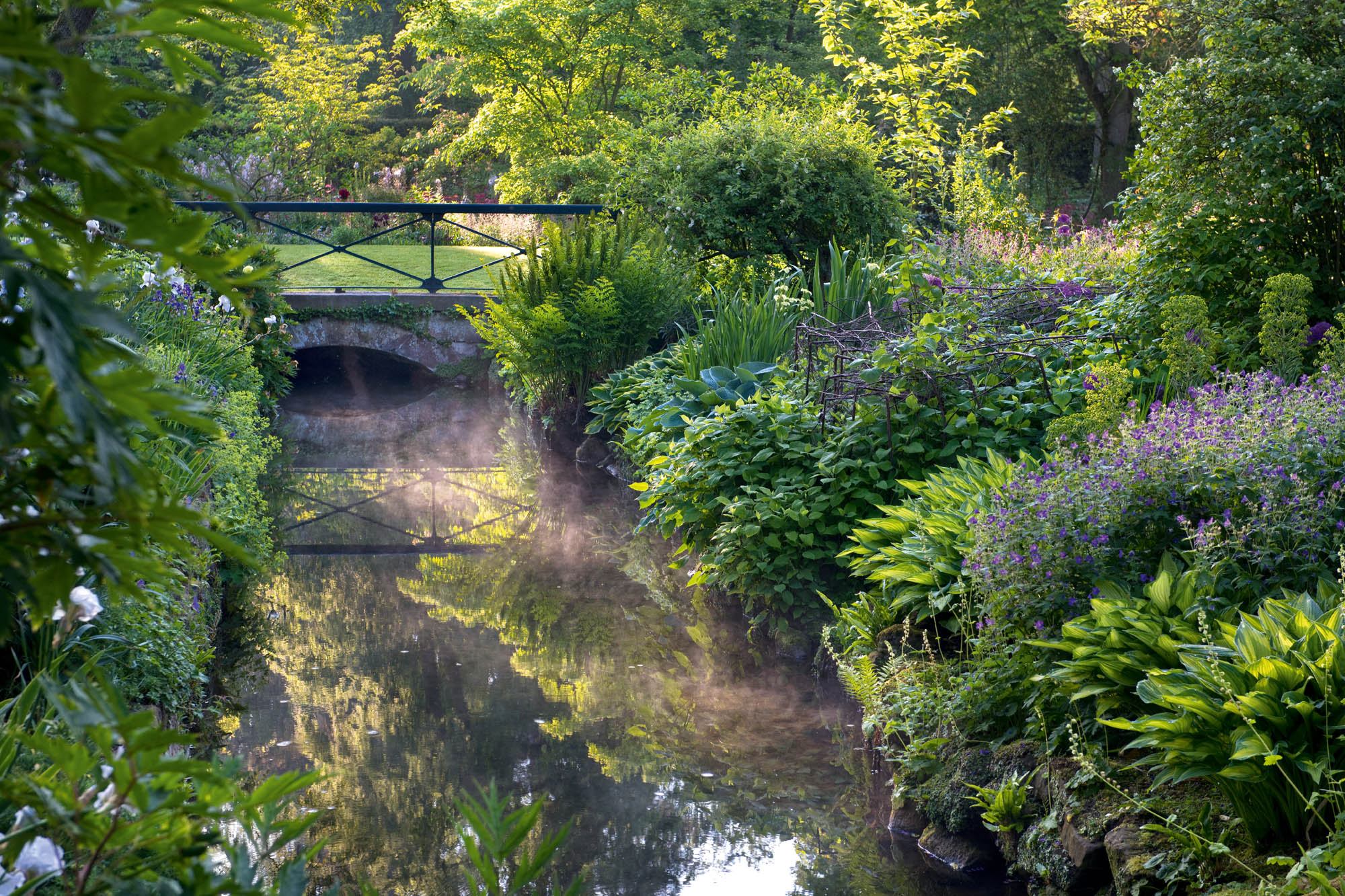
Vital to the transformation has been Lady Ralph’s vision and attention to detail. As a distinguished portrait painter, her tireless passion for the possibilities of colour and form has led directly to the magical atmosphere of the garden today.
The original design of the garden was conceived by Thomas Coke, Vice-Chamberlain to Queen Anne, who commissioned the day’s leading garden makers, London and Wise, to develop a detailed scheme for Melbourne Hall, which was implemented in 1704. ‘I really think that, after that, very little happened botanically except that the Victorians planted laurel absolutely everywhere. When we came here in 1987, there were lots of self-set holly, yew, sycamore and Rhododendron ponticum — it was quite dark.’ The house was rented out for 100 or so years until shortly before the war, but, although the garden was well maintained, things had become rather settled: the era of reassessment and subtle experimentation with plants was about to arrive.
Brought up in Cornwall and Scotland with a love of woodland gardens, followed by several years in Spain apprenticed to Catalan artist Joaquin Torrents-Llado, Lady Ralph’s approach to restoring and bringing life to the garden was both intuitive and brave. Many a mature plant ‘had to go’ — four huge cypresses around Mercury, some ‘rather majestic’ Corsican pines and ‘six huge golden yew balls that spread out over the path at the top of the garden, blocking the view to the urns’. She remembers her husband looking with dismay out of his dressing-room window after the yews had been removed: ‘It looked as if six bombs had fallen on the lawn.’
Keeping a sense of the garden as a whole was key. ‘My worry was not wanting only to do little pockets: rather like a canvas, you want to see all the painting at once.’ It was a huge relief when she realised that a Dawyck beech, given to the couple by her mother, was planted ‘far enough to the left’ of a particular avenue to be allowed to grow on in peace.
Exquisite houses, the beauty of Nature, and how to get the most from your life, straight to your inbox.

Tremendous brick walls run down either side of the spacious, east-facing main lawn, preserving the sense of crisp and uncluttered space. Behind the north wall is a sheltered and wonderfully scented Winter Garden. To the east, beyond the Yew Tunnel, the atmosphere switches again. You find yourself in a series of intimate, enclosed spaces. The light is dappled under overhanging trees and there is a sense of being cushioned by the velvety presence of seemingly endless yew hedging.
It was here in damp ground on the banks of informal streams that Lady Ralph began to work with colour. She planted trees such as Davidia involucrata and Acer griseum and, at their feet, developed a dancing carpet of blue and yellow. When selecting trees in the early days, she was helped by Robert Vernon of Bluebell Arboretum & Nursery in Derbyshire who would ‘arrive with a lorry of rare oaks’. When choosing shrubs and perennials, she was in her element, loving the chance to find exactly the right shade of candelabra primula, iris and rose to create the effect she wanted. ‘You have to be so careful with yellow,’ she explains, recommending the pale butter-yellow of Kirengeshoma palmatum and the delicate Rosa ‘Vanessa Bell’ — also pale yellow with near-white outer petals. There are pools of Corydalis ‘Blue Heron’, with fragrant flowers of the deepest electric blue.
For the Long Borders, she chose light and dark pinks, framing the planting with graceful trees. Rhythmic stands of dazzling crimson lupins, fluttering shoals of pale Japanese water iris and bobbing candelabra primula in every shade of pink — an unstoppable corps de ballet threading their way through the whole. Lady Ralph, with her gardener Val Potter, is always looking closely and editing the balance of colour. When I visit, a richly coloured monarda gets away with being too red, but a rapidly expanding sugary-pink astilbe will be noticeably reduced.
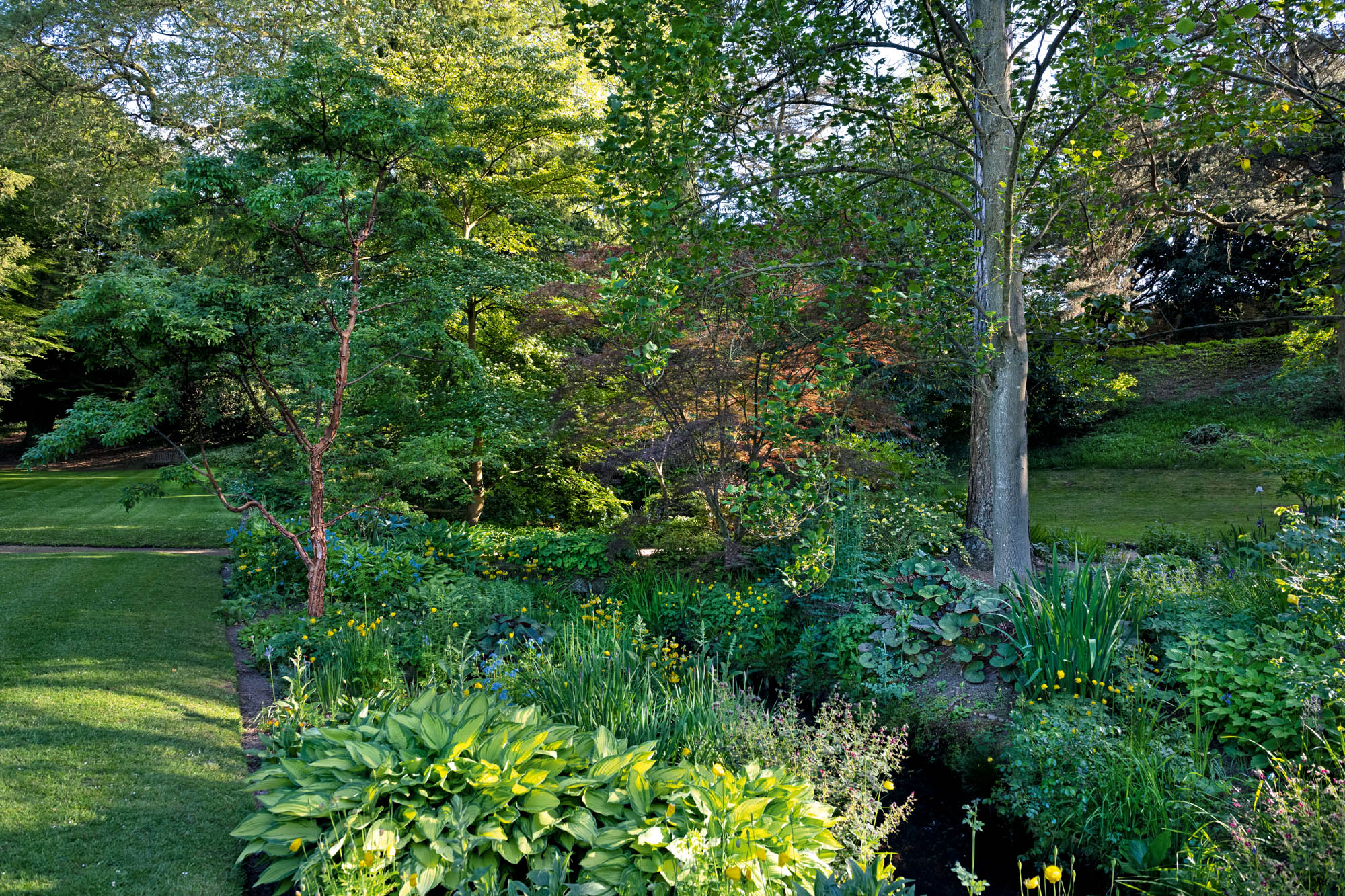
On the opposite side of the mown-grass path, the mill-stream borders are mesmerising with smokey-mauve hostas and towering, papery, yellow heads of Cephalaria gigantia underpinned by mounds of Hydrangea arborescens ‘Annabelle’, which reach right down to the water to bloom again as reflections.
The heart of this area is the Arboretum, an enclosed garden of graceful trees in a sea of fine long grass. Dogwoods include Cornus ‘Venus’, known for its large white flower bracts, and exquisite horse chestnuts, such as Aesculus glabra ‘Autumn Blaze’. ‘It has the most beautiful autumn colour of anything you will ever see — I took the liquidambars out because they looked vulgar by their side.’
For spring, the bulb planting is equally restrained and finely judged. Lady Ralph partners Tulipa ‘Queen of Night’ with T. ‘Recreado’, ‘because it is not quite so dark, a bit more plum, it is lovely to have the two together’, and there are inky-blue and powdery-blue camassia to play off each other in the same way.
There is so much more — the recently planted avenues of ‘Hatfield Tall’ limes rising up to the horizon in the Park behind The Birdcage, the new walled Rose Garden with its dreamy, delicate palette, the exquisite hand-printed velvets drawn from Lady Ralph’s shimmering paintings of the Water Garden.
The gardens at Melbourne Hall are fascinating and exhilarating. With such passionate and creative custodians, they will inspire and delight for many years to come.
Visit www.melbournehall.com

Assembling the frame: Lady Ralph on how the borders at Melbourne Hall use delicate trees and shrubs to enrich their luminous painterly quality
Cornus ‘Norman Hadden’ The wonderful semi-evergreen, multi-stem hybrid of C. kousa and C. capitata. An exquisite large shrub or eventually small tree with masses of cream-white bracts in midsummer turning pink as they age: ‘One by one, they go like pink butterflies — I particularly love it’
Cornus controversa ‘Variegata’ (the wedding-cake tree) This most elegant tree, with cream variegated leaves and distinctive layered branches, creates an ethereal backdrop to the dancing Long Borders. Rich red-purple autumn colour extends its contribution to the light and dark pink palette over a long season
Viburnum plicatum ‘Mariesii’ A dazzling firework of a shrub. Graceful, distinctly layered branches bear large white lacecap flowers in late spring and early summer. The handsome dark-green foliage turns a rich claret in autumn
Rosa xanthina ‘Canary Bird’ One of the earliest roses to flower, with arching branches of clear-yellow, fragrant, single flowers, followed by maroon hips. A graceful spreading shrub up to 7ft tall with dainty, fern-like grey-green foliage, this rose prefers dappled shade, an elegant mid storey in the Bog Garden

The walled garden at Glenarm Castle, full of surprising, exhilarating and fiery colours
Glenarm Castle's walled garden is a testament to the endless nurturing enthusiasm and creativity of those who care for it,

Warnell Hall, Cumbria: Where sympathy and experimentation go hand in hand
Non Morris is intrigued by the close attention to detail that has produced a new Cumbrian garden of great style
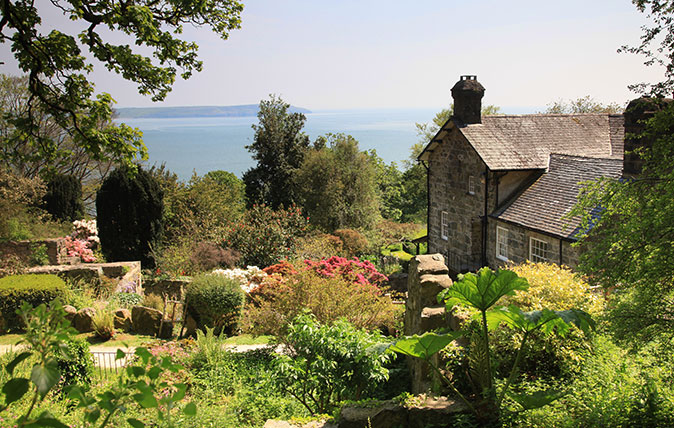
Credit: Plas yn Rhiw - National Trust
Plas yn Rhiw: An intoxicating Welsh garden that time forgot
Non Morris visited one of the most beautiful gardens in Wales, and came away utterly smitten.
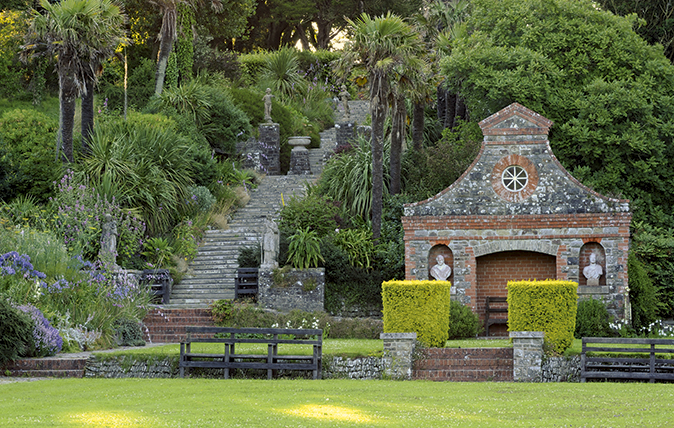
Tapeley Park: A Devonshire garden filled with dramatic flourishes at every turn
Non Morris discovers that experimentation, environmentalism and numerous dramatic flourishes invigorate this unusual Devonshire garden at every turn.
